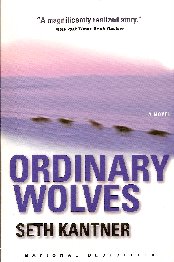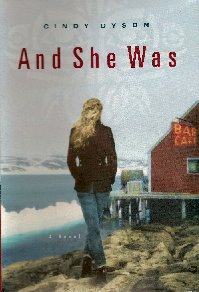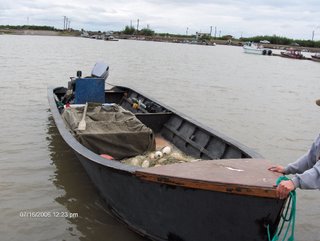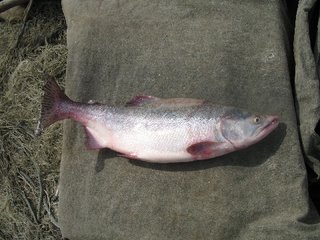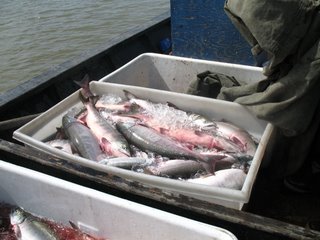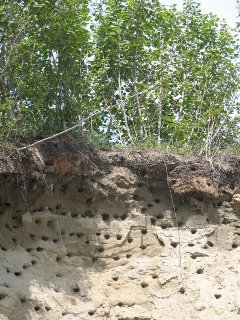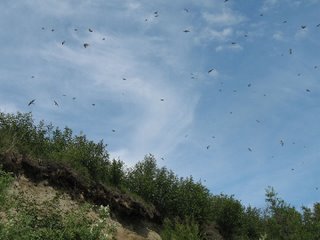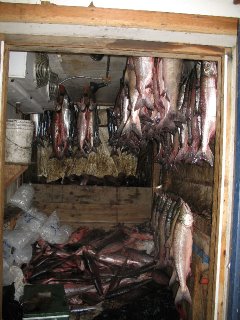He Bit Me

It was a routine 2 year old Well Child Exam on a developmentally normal boy. I knew there was going to be a challenge in it because the nursing staff had to herd the child back into the exam room twice in the 10 minutes he and his mother had to wait there for me to finish up with the previous patient. Mom sat quietly in the room while Jacob ran up and down the hallway, opened exam room doors and stuck his head inside to see who was there, and generally entertained himself in any way he wanted. This behavior is not unusual in our clinic; the nurses are frequently apprehending disruptive children.
Once corralled in the exam room, Jacob amused himself by finding ways to make noise. The exam table’s hinged, sliding stirrup extensions produced a few decibels when slammed in and out, as did jumping on and off the retractable step at the base of the table. When I entered the room he was in the process of tearing the table paper off and making balls of it, which he threw at his mother. As soon as he saw me, he began crying (actually, “shrieking” would describe the noise a bit more accurately) and ran to hide behind the far end of the exam table.

I took a deep breath and sat down to talk to Mom. Jacob is 2 years, 10 months old, lives in an upriver village with both parents and his 1 year, 6 month old brother. Mom is in her early twenties, and about six months pregnant. She has no concerns about his health or development, and feels that he is a normal boy. Except, she notes, “he’s mischief!”
Jacob was up to date on his immunizations; the main reason he was in clinic was that he had to have a hemoglobin check to enter the village pre-school program. The health aides in his village refused to do it, so Mom had to bring him to Bethel. I should have paid a little more attention to that fact at the time.
By the time we finished the history portion of the visit, Jacob’s crying had decreased in volume, but had not stopped. He came out from behind the exam table when Mom called him, and stood next to her; but as soon as I tried to speak to him about doing his exam, he wailed and crawled under Mom’s chair. Mom’s only attempt to change any of this behavior was to say “Jacob, be nice.”
I grabbed his feet and pulled him out from under the chair, picked him up and set him on Mom’s lap, and told him firmly that we had to do his exam. I wasn’t mean or rough with him, simply direct and firm. He kicked and fought from Mom’s lap, elbowing her in the stomach once and kicking me in the shin before I trapped his flailing feet between my knees and Mom held his arms so he couldn’t punch. I talked to him all the while, telling him what I would do before I did it. His struggling never stopped and his crying was pure mad.

As I was placing the stethoscope on his chest, he threw himself forward from Mom’s lap and bit my arm. He bit me! The little brat actually bit me! I was astounded. In all my years in family practice, that had never happened before. As I looked at my forearm, a hematoma rapidly formed. There were slight abrasions where he had dragged his teeth as I jerked my arm away (saying “OW!” quite loudly), but his teeth didn’t break the skin.
Once my astonishment and disbelief passed, I was angry. How dare he! My instinct was to pick him up and spank his bottom for that behavior, but of course I didn’t/couldn’t/wouldn’t. Mom’s response was to say “Jacob, that’s not nice, say you’re sorry.”
Right.
She looked at me apologetically and said “He does that when he is mad.”
We managed to restrain him (carefully!) to complete the exam, which was normal except for his notable baby bottle tooth decay. When I asked Mom about it, she said that he still goes to bed with a bottle every night—usually milk, but sometimes Coke!

The hospital’s health educators and the Dental and Pediatric Clinics have been focusing educational efforts on the issue of baby bottle tooth decay and its prevention since before I first came to southwest Alaska in 1998. How could anyone still be doing this? I tried not to look aghast as I told her that this was the worst possible thing for his teeth, and the reason they were so rotten. She just shrugged helplessly and said “He won’t let us put him to bed without it.”
So who is in charge here? It is clearly not the parents. Jacob is a willful little bully who is not yet three years old; what will he be like at nine? At sixteen? And what do I tell his mother about changing his behavior when she is clearly impotent at managing him?
Yupik Eskimo culture generally subscribes to the School of Permissiveness when it comes to parenting. Children have very few restraints, and punishment often consists of threats (to restrict access to junk food or TV) which are not implemented or “time outs” which are not enforced. This mom’s helplessness in dealing with her son’s behavior is not uncommon.
On any given day, the hospital lobby/waiting area may have a half dozen 3-to-5-year-olds chasing each other around and entertaining themselves unmonitored by an adult or older child. An overhead page saying something like “there is a little boy going out the front door wearing blue pants and a red shirt. Somebody come and claim him, please” is heard almost daily.
My personal culture is in a head-to-head clash with Yupik culture over this issue. I grew up in the 1950s and 60s, and my parents subscribed to the School of Corporal Punishment. Acceptable behavior was very clearly outlined, and punishment for infractions was swift. It consisted of spanking, but only on the bottom, and only with a hand, never with a belt or switch as my parents had grown up with in the 1930s and 40s. In the 1960s, boys at my grammar school were still paddled by the principle for misbehaving.
I never had children, and so never had to deal directly with the issue of punishment. I don’t consider spanking to be a requirement of discipline, but I also don’t believe a smack on the bottom for misbehaving to be child abuse.
What I see in this region is a population heavily skewed toward young age, families who commonly have six to ten kids living in small houses with inadequate space, a fair amount of dysfunctionalism due to alcohol abuse, and lots of kids growing up with little behavioral restraint. Which is not to say that all, or even most of the kids are bullies, brats, or holy terrors. They aren’t. Many Yupik children are quiet, polite, well-behaved, respectful, charming, and totally delightful. The School of Permissiveness definitely has its successes.
But what do we do with the failures? What do I tell Jacob’s mom that will help her to keep him from being a totally out-of-control teenager who is capable of doing real harm to others?
On that day, I didn’t tell her much that I felt would make a difference. I strongly encouraged her to put him to bed without a bottle, expecting to spend the first few nights with him yelling about it.
“Don’t give in!” I told her.
I advised her that the biting behavior had to stop; he will cause serious infections by doing that. I referred him to Dental Clinic for his cariotic teeth, and sent them off to lab for his finger-stick hemoglobin test. I put a sticky-note on the lab form, saying “Warning—he bites!”
Photos: some of the delightful children of Pilot Station, Alaska
Labels: Bush Medicine
